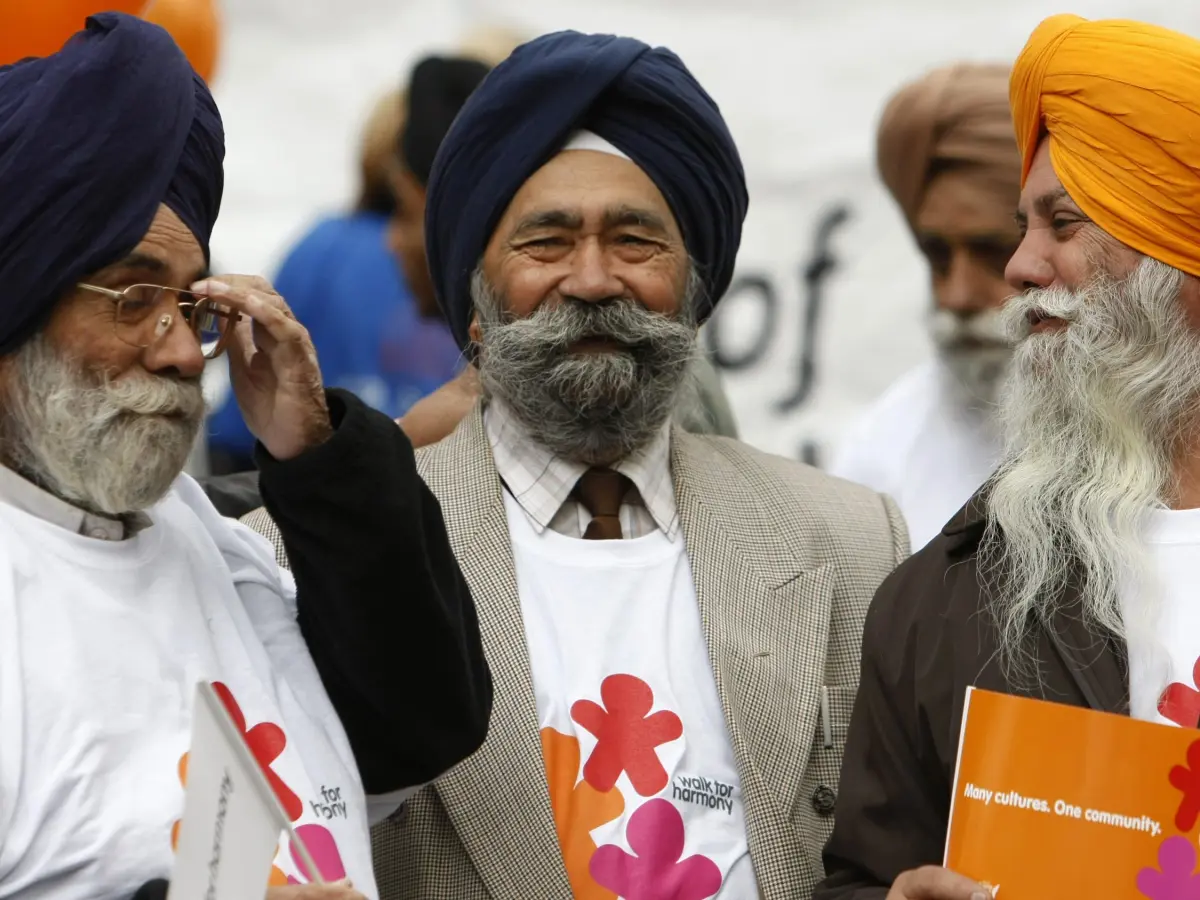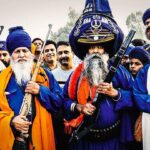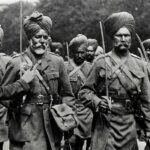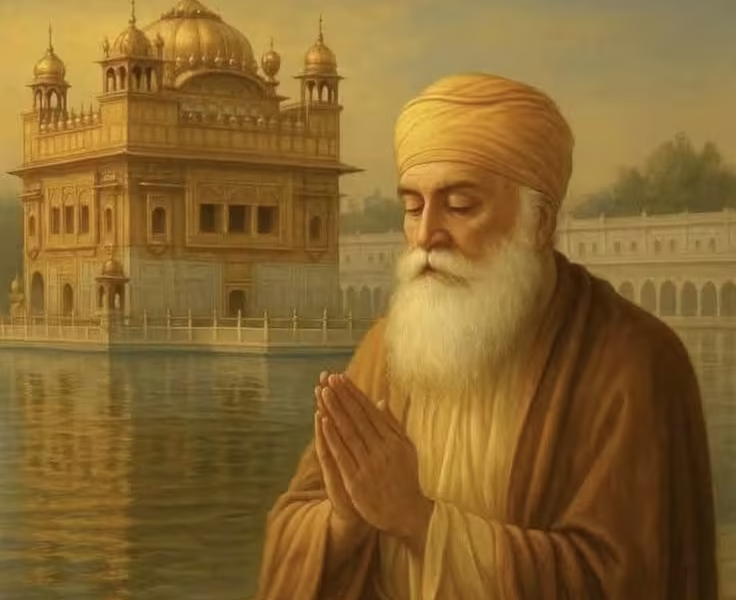Religions in Punjab
Punjabi people began practicing Hinduism, the oldest recorded religion in the Punjab region. An ancient Indian law book called the Manusmriti, founded by Brahmin Hindu priests changed the Punjabi religious life from 200 BC onwards. Later, the rise of Buddhism and Jainism in India saw many Punjabi Hindus embracing the Buddhist and Jain religions. However, the gradual decline of Buddhism on the Indian subcontinent, which coincided with the establishment of the Gupta Empire in the early 4th century, led to Punjab becoming a major Hindu community due to religious harmony, although Jainism continued as a minority religion.

The advent of Islam in ancient India for the first time in the 8th century CE led to the conversion of some Punjabi Hindus to Islam, especially in the southern and western regions, while the rise of Sikhism in the 1700s saw some Punjabi, both Hindu. and Muslims, who adopted the new Sikh religion. Several Punjabis during the colonial period in India became Christians, with all these religions reflecting the religious diversity now found in the Punjab region.
The Punjab region is the birthplace of the monotheistic religion known as Sikhism. And many well-known followers of Sufism were born in Punjab.
Due to religious differences, the migration of the Punjabi people began long before they were separated from the credible records. Just before the partition of India, Punjab had a relatively small Muslim population of about 53.2% in 1941, which was an increase compared to previous years. [99] With the separation of Punjab and subsequent independence of Pakistan and later India in 1947, the mass exodus of Muslims from Indian Punjab to Pakistan, as well as Sikhs and Hindus from Pakistan to Indian Punjab took place, making Pakistani Punjab almost Muslim and Indian Punjab. almost completely non-Muslims.

Today, most Punjabi Pakistanis follow Islam with a Christian minority, as well as Sikhs and minor Hindus, while most Punjabi Indians are either Sikhs or Hindus with a minority Muslim. Punjab is also a birthplace of Sikhism and the Ahmadiyya movement.
Following the independence of Pakistan and subsequent secession, the process of human exchange took place in 1947 as Muslims began to leave India and head for the newly formed Pakistan along with Hindus and Sikhs left Pakistan for independent India. As a result of this demographic trade, both sides are now very similar, in terms of religion.
Punjabi Muslims
Punjabi Muslims are found almost exclusively in Pakistan and 97% of Punjabi live in Pakistan following the Islamic religion, unlike Punjabi Sikhs and Punjabi Hindus who live mainly in India.
The Arab Umayyad army brought Islam to the region led by Muhammad bin Qasim who defeated Sindh and Southern Punjab in 712, by defeating Raja Dahir. The Umayyad Caliphate was the second Islamic caliphate established after the death of Muhammad. It was ruled by the Umayyad dynasty, whose name is derived from the Umayyad ibn Abd Shams, the ancestor of the first Umayyad caliph.

The rise of Islam in Punjab began during the reigns of various Muslim kings and kingdoms in the Punjab region, including the Ghaznavids under Mahmud of Ghazni, Delhi Sultanate, the Mughal Empire, and finally, the Empire of Durrani. . Earlier the Ghaznavids had conquered and converted many of the Hindu and Buddhist kingdoms of Afghanistan. The province became an important center and Lahore was made the second capital of the Ghaznavid state. The Delhi Sultanate and the Mughal Empire later ruled the region. Sufi missionary saints with their dargah filled the Punjab region have also played a major role in bringing about change. The Sufis also have educated Punjab leaders for centuries. Ancient Punjabi epics, such as Heer Ranjha, Mirza Sahiban, etc. written by Sufis such as Waris Shah. The Muslims invented Punjabi literature, using Shahmukhi as the leading Punjab text, and as a major contributor to regional music, art, food, and culture.
Punjabi Hindus
Today, the Punjabi Hindus are found mainly in the Indian Punjab where they make up about 38.5% of the population, and in the neighboring regions such as Haryana, Himachal Pradesh, and Delhi, which are part of the larger historical region of Punjab. Most of the Hindu Punjabis in the Indian capital Delhi are foreigners or descendants of immigrants from various parts of Punjab in West Pakistan. Other Punjabi Hindus can also be found in the areas bordering Jammu and Rajasthan as well as new immigrants to various places in other major cities such as Mumbai. There has also been the ongoing migration of Punjabi Hindus to western countries such as the USA, Canada, Australia, New Zealand, the European Union, the UAE, and the UK.

In the Punjab province of Pakistan, there are 2.2 lakh Hindus making up about 0.2% of the population of the province. Hindus live mainly in the Southern Punjab regions of Rahim Yar Khan and Bahawalpur.
Punjabi Hindus speak a variety of dialects including Lahnda, as well as Majhi (Traditional Punjabi) and others such as Doabi and Malwi. Some have been able to preserve the Punjabi vernacular languages spoken in Western Punjab, but many have used Hindi. Punjabi Hindus in India use the Nāgarī script to transcribe Hindi and Punjabi languages. [109]
Punjabi Sikhs
Sikhism from Sikh, meaning “disciple”, or “disciple”, is a monotheistic religion founded in the Punjab region of the Indian subcontinent during the 15th century. The basic tenets of Sikhism, expressed in the holy writings of Guru Granth Sahib, include faith and meditation in the name of the one Creator, unity and equality of all humanity, participation in self-sacrifice, striving for social justice for the benefit and prosperity of all. , and honesty and livelihood while living the life of a householder. As one of the world’s smallest religions, with 25-28 million followers worldwide, Sikhism is the fifth-largest religion in the world.
Sikhs make up almost 58% of present-day Punjab, India.
Gurmukhi is a writing script used by Sikhs and Sikhism texts. It is used in official texts in some parts of India and elsewhere. The tenth Sikh leader, Guru Gobind Singh (1666 – 1708) founded the Khalsa Brotherhood and imposed a code of conduct on them.
Punjabi Christians
Christian missionaries traveled with the Portuguese from India, India, and Britain when they arrived in India. Catholicism was introduced by the Portuguese and the French, and Protestantism was introduced mainly by the British in the late 18th and 19th centuries.

The total number of Punjabi Christians in Pakistan is estimated at 2,800,000 and 300,000 in Indian Punjab. Of these, about half are Roman Catholic and half are Protestant. Many modern Punjabi Christians descended from proselytes during the British occupation; initially, the conversion to Christianity came from “the highest levels of the Punjab society, from the noble and the noble”, which included “high-class” Hindu families, as well as Muslim families. However, some modern-day Punjabi Christians have converted to the Chuhra sect. The Chura was widely converted to Christianity in North India during the British Raj period. Most were converted from the Hindu Chura communities of Punjab, and to a lesser extent the Mazhabi Sikhs; under the influence of zealous army officers and Christian missionaries. Therefore, since independence, they have now split between Pakistani Punjab and Indian Punjab. Large numbers of Mazhabi Sikhs were also converted in the Moradabad region and the Bijnor region of Uttar Pradesh. Rohilkhand saw the mass conversion of all its 4500 Mazhabi Sikhs into the Methodist Church. Sikh organizations were shocked by the rate of conversion in high-ranking Sikh families, and as a result, they immediately responded by sending Sikh missionaries to prevent conversion.








